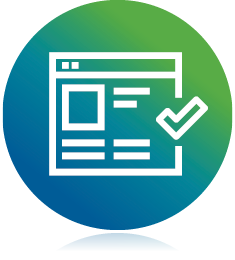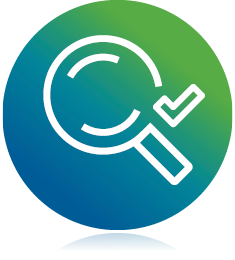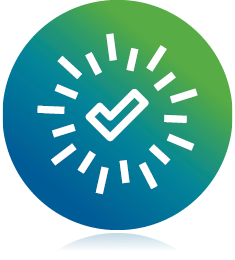
Developing a new diploma or certificate program
Explore the stages involved in developing a new diploma or certificate program at Georgian, including a statement of interest, program design, approvals and interested and affected party notifications.
What you need to know
A new program is developed to meet student, community, social and labour needs, and to complement the strategic direction of the college as outlined in the Strategic Plan, Strategic Mandate Agreement, Academic Plan, Strategic Enrolment Management Plan and government initiatives.
Diploma and certificate programs must meet the curriculum standards of Georgian College, the Credential Validation Services (CVS) and Ministry of Training, Colleges and Universities (MTCU). As such, there are a number of steps involved in creating a new program from idea to launch.
1. Statement of interest
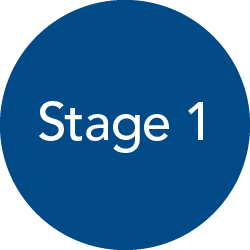
New programs are developed in alignment with Policy AC-003: New Program Development.
All ideas for new programs are initially discussed at the Academic Executive Team (AET) and approved for further exploration based on alignment with strategic priorities, differentiation, opportunities for interdisciplinary collaboration, and employment outlook.
Once approved by AET, the academic area makes a formal case for adding the new program to the current program mix. This is dependent upon extensive analysis and documentation, which are presented as the Statement of Interest (SOI), and housed within the Curriculum Information Management (CIM) system.
The SOI includes the Proposed Program Analysis, Program Demand Research Analysis, Program Steering Committee Consultation, and Capacity Assessment and Preliminary Program Costing.
The Statement of Interest (SOI) includes a proposed program analysis, which must be completed in CIM. This provides an opportunity for the academic area to demonstrate the rationale for adding a new program to the current college mix. The academic area works with the Office of Academic Quality (OAQ) to provide the following information:
- program specifications (including MTCU codes and related the Provincial Program Standard or Descriptions)
- working Program Vocational Learning Outcomes (PVLOs)
- outline of the strategic benefits of the program
- explanation of program fit with current mix
- analysis of the institutional capacity for delivering a new program
- assessment of potential risks involved
In conjunction with Institutional Research, the academic area conducts the Program Demand Research Analysis to determine if the new program can be launched and sustained. This includes the following:
- student and labour market demand analysis
- work-integrated learning potential
- transfer and articulation potential
- partnership potential
- profile of key competitors and program differentiation
The dean of the academic area assembles a Program Steering Committee (PSC) to provide consultation during the early research stages of the program. The PSC includes industry and community representatives and Georgian faculty and staff, and meet in order to discuss community and industry need for the proposed program, as well resource requirements from an employer perspective.
The dean ensures the PSC meeting minutes are documented and attached to the program proposal in the CIM, prior to the convening of the Capacity Assessment Committee (CAC).
If the above analysis and research indicate the potential for success, the VPA approves the SOI, and the CAC convenes to discuss in further detail the college’s ability to run and sustain the proposed program. This results in a preliminary Program Costing, which is completed by the business manager for the academic area in conjunction with Financial Planning. The costing includes the following:
- program development costs
- projected program delivery costings (including online development, specialized space, specialized IT requirements, capital and specialized equipment)
- start-up costs
- projected staffing plan
- Library Commons and learning resource requirements
- promotion and marketing
- Return on Investment (ROI) analysis
The final CAC decision (recorded in official meeting minutes) and the preliminary Program Costing, are both attached to the program in CIM.
The VPA reviews the complete SOI and brings it to the Senor Leadership Team (SLT) and the Academic Leadership Team (ALT) for information. The dean then has the approval to proceed with development of the program curriculum.
2. Program design
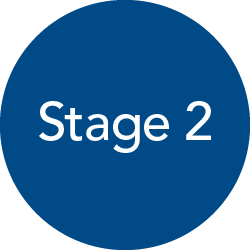
In stage two of the new program development process, the academic area works toward ensuring that the college is able to deliver the quality of education necessary for the new program’s success. The academic area is responsible for designing the new program curriculum.
The design of a program depends upon a team of academic experts working collaboratively. This team includes the dean/associate dean, lead faculty (often the program co-ordinator), faculty experts in the area, and a member of the OAQ.
An essential external contributor to new program development is the PSC, a group made up of industry advisors. PSC members provide subject matter expertise and knowledge of the employment landscape and help to ensure the new program is current and relevant to future employment and academic pathways. Members of this committee generally becomes members of the Program Advisory Committee (PAC) once the program is launched. Other key external parties include regulatory bodies who should be consulted regarding external requirements, and industry community partners.
Internally, the Office of the Registrar (RO) is a key area that should be consulted regarding admissions requirements; they can also help to resolve any issues around how the structure of a program may impact funding, student fees, academic space and scheduling. Other academic areas can collaborate around shared courses or potential pathways. Internal groups should be consulted on an as needed basis and can include the following:
- Credit for Prior Learning
- Information Technology
- graduates and students
- Physical Resources
- Student Services (Library Commons, Co-op Education and Career Success, etc.)
For a list of complete interested and affected parties, refer to the Integrated Planning and Consultation chart.
The MTCU code provides program teams with the foundation for developing all new programs of instruction at the college. It’s a five-digit number assigned by the Ministry to programs of instruction similar in their vocational objectives and titles; the code also includes elements such as course hours, program duration and instructional settings, program weight and funding units, and tuition limits. When developing a new program, the OAQ will help your team identify the appropriate MTCU code and related Provincial Program Standard or Description that best meet the needs for development.
It is important that teams identify whether the program aligns with a Program Standard or a Description. The ways in which titles and Vocational Learning Outcomes (VLOs) are used are based on this distinction, as dictated by the Ontario Colleges Quality Assurance Service (OCQAS), the body that oversees the Credentials Validation Service (CVS) and the College Quality Assurance Audit Process (CQAAP).
When considering the title of a program, it is necessary that teams adhere to the Titling Protocols established by the CVS. In brief, these protocols were designed to ensure that program titles are
- consistent across the college system
- describe of the field of study (not the delivery mode or occupation)
- uphold truth in advertising
Refer to the CVS Titling Protocols document for the complete protocols with explanation, and contact the OAQ for support.
The Program Outline includes essential information about an academic program, including program learning outcomes, courses, admission requirements, graduation requirements, student progression and more. This document serves the needs of students, faculty, administrators, and external approval bodies. For a new program to launch at the college, the program outline must be approved both internally and externally.
The Program Tracking illustrates the sequencing of courses as students take them from semester one through to graduation. Pop-up bubbles linked to the course codes are used within the tracking to provide essential information, including the course description, hours, requisites, and Prior Learning Assessment eligibility. In this section, teams also identify whether or not work-integrated learning in the program exists to meet the requirements of a professional or occupational regulatory body.
The program tracking is completed within CIM and requires some training. Refer to the CIM section of our website for further information.
All course outlines for a new program need to be drafted and approved by the dean or associate dean within the CIM system prior to program approval at Academic Council (AC). The course proposal form in CIM provides instruction regarding all of the essential components via help bubbles: title, hours, semester offered, delivery method, requisites and equivalents, the course description, course learning outcomes, course content, and course evaluation.
Course outlines are finalized in the system once the Program Outline is approved at AC during stage three.
Please contact the OAQ for curriculum coaching and resources. The Centre for Teaching and Learning (CTL) will provide support with assessment and instructional design, once the program curriculum is approved.
There are numerous ways to map the curriculum of a program. Maps are useful in creating a picture of your program from a particular angle, and the type of map you use is dependent upon your goal. Elements of mapping might include program and course learning outcomes, assessment, and accreditation requirements, to name a few.
Mapping requirements for new programs include Vocational Learning Outcome Mapping and Detailed Curriculum Mapping.
Vocational Learning Outcome Mapping
Vocational Learning Outcome (VLO) Mapping is a requirement of the Ontario Colleges Quality Assurance Service (OCQAS), and is used to ensure that programs are developed from VLOs and Essential Employability Skills (EES). Program teams will map proposed Program Learning Outcomes (PLOs) to Provincial VLOs, and individual courses to both PLOs and EES. At the same time, if proposed PLOs differ from the VLOs, teams are required to justify the difference. This VLO mapping and justification is done within the CIM system, and must be approved internally by AC.
Detailed Curriculum Mapping
The Detailed Curriculum Map enables faculty to map every Course Learning Outcome (CLO) to each Program Learning Outcome (PLO) and Essential Employability Skill (ESS), as well as to institutional priorities such as entrepreneurship and Indigenization. In a grid layout, faculty also identify when each CLO is Introduced for the first time (I), Reinforced (R), and/or Assessed (A) in each course.
Curriculum mapping helps faculty to conceptualize the big picture in the sequence of course learning concepts and see how the pieces of the curriculum fit together. It helps faculty identify gaps in the intended learning and provides opportunity to re-think course sequencing. Course mapping also helps the college illustrate its adherence to ministry guidelines that program PLOs, courses, lessons and evaluation stem from the provincial VLOs.
3. Internal approval
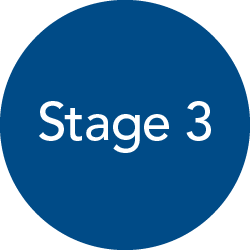
Once the program curriculum is completed, it must be approved at AC.
The dean/associate dean submits the curriculum via the CIM system to the OAQ at least three weeks in advance of the scheduled AC meeting. This gives the OAQ time to review the documents to ensure they meet Ministry and curriculum system requirements. If anything needs clarification, the curriculum may be sent back to the academic area for revision. It can then be resubmitted and will be sent via the CIM workflow to the members of AC no later than one week prior to the meeting.
The final internal approval process is as follows:
- AC approves proposed program curriculum – must occur by December.
- Any outstanding information regarding the new program proposal is completed (including updated research as required, and final Program Costing).
- Vice President, Academic approves the new program proposal.
- Director, Financial Planning approves final Program Costing.
- Senior Leadership Team (SLT) approves the new program proposal.
- Board of Governors approves the final proposal and recommends the new program to the CVS for validation – must occur by February at the latest.
This series of approvals can take one month or more, due to the schedule of meeting dates. Programs must be approved by AC by December at the latest.
Once the Board of Governors has approved the program, it is ready for external approval.
4. External approval
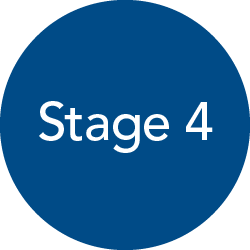
Once a new program proposal has passed all of the college’s internal approvals, it needs to be submitted to the CVS, a branch of the OCQAS. CVS reviews new program proposals to ensure “that the programs meet or exceed the expectations and requirements set out in government policy through the Minister’s Binding Policy Directive, Framework for Programs of Instruction” (OCQAS, 2018).
Upon CVS approval, the program is submitted to the MTCU for funding approval. Please allow four months for final funding approval.
All of the information required for CVS and MTCU approval is housed at the end of the new program proposal form within the CIM system.
While awaiting external approvals, work should continue on course development.
5. Final notifications
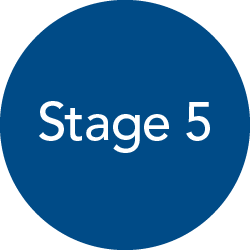
Once the internal and external approvals have been obtained, it’s time to begin notifying interested and affected parties in a timely manner.
Accurate, consistent, and timely information is required well in advance of a program launch in order to attract students to the college through high school visits, college open houses, employers, the college viewbook, Georgian’s website, and promotion on the Ontario College Application Service (OCAS) website. The information is also necessary for the college to:
- establish tuition and program ancillary fees
- register students
- schedule classes and assign space
- enable students to plan their educational paths to graduation
- allow students to select their courses by semester
- determine graduation eligibility
Upon receipt of Ministry Funding approval, the following occurs:
- Immediately: OAQ notifies the Office of the Registrar (RO); the dean/associate dean, program development team, program assistant, and academic officer of the relevant academic area; Finance and Corporate Services; Marketing, Communications and Recruitment; and Co-op Education and Career Success (if relevant) via the CIM system.
- June: OAQ submits the program information to Marketing, Communications and Recruitment for inclusion in the college viewbook.
- September: RO provides the information to the OCAS for promotion on its website: ontariocolleges.ca.
- Ongoing: Program teams prepare for program delivery, including the development of assessment, instruction, and course syllabi. Please contact the CTL for support.
Most Ontario College Certificates, Ontario College Diplomas, and Ontario College Advanced Diplomas target direct-entry students, and as such, must adhere to the above submission deadlines.
The program launch date in these cases is September of the following year (e.g., a new program loaded into OCAS in September 2024 will have its first intake in September 2025).
Questions?
Contact the OAQ team
We can provide a number of resources with regard to curriculum development and design, and work with program teams on curriculum development.
We’re here to assist with answers to questions about the Curriculum Information Management system (CIM), approvals, deadlines and more.
Send us an email:
academicquality@georgiancollege.ca
